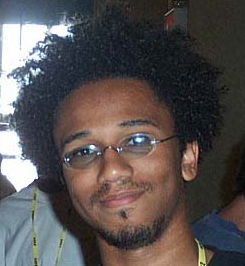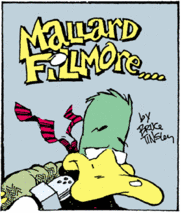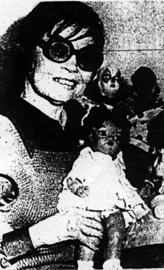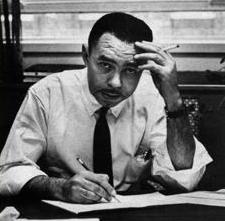
A comic strip is a sequence of cartoons, arranged in interrelated panels to display brief humor or form a narrative, often serialized, with text in balloons and captions. Traditionally, throughout the 20th and into the 21st century, these have been published in newspapers and magazines, with daily horizontal strips printed in black-and-white in newspapers, while Sunday papers offered longer sequences in special color comics sections. With the advent of the internet, online comic strips began to appear as webcomics.

A cartoon is a type of visual art that is typically drawn, frequently animated, in an unrealistic or semi-realistic style. The specific meaning has evolved, but the modern usage usually refers to either: an image or series of images intended for satire, caricature, or humor; or a motion picture that relies on a sequence of illustrations for its animation. Someone who creates cartoons in the first sense is called a cartoonist, and in the second sense they are usually called an animator.
Chester Gould was an American cartoonist, best known as the creator of the Dick Tracy comic strip, which he wrote and drew from 1931 to 1977, incorporating numerous colorful and monstrous villains.

Aaron Vincent McGruder is an American writer, cartoonist, and producer best known for creating The Boondocks, a Universal Press Syndicate comic strip and its animated TV series adaptation.

Henry is a comic strip created in 1932 by Carl Thomas Anderson. The title character is a young bald boy who is mostly mute in the comics. Except in a few early episodes, when the comic strip character communicates, he does so largely but not entirely through pantomime. He also spoke in a comic book series of 1946–1961 and in at least one Betty Boop cartoon from 1935 in which Betty Boop has a pet shop and Henry speaks to a dog in the window.

Mallard Fillmore is a comic strip written and illustrated by Bruce Tinsley until 2019 and Loren Fishman since 2020. It has been syndicated by King Features Syndicate since June 6, 1994. The strip follows the exploits of its title character, an anthropomorphic green-plumaged duck who works as a politically conservative reporter at fictional television station WFDR in Washington, D.C. Mallard's name is a pun on the name of the 13th president of the United States, Millard Fillmore.

Morris Nolton Turner was an American cartoonist. He was creator of the strip Wee Pals, the first American syndicated strip with a racially integrated cast of characters.
Darrin Bell is a Pulitzer Prize-winning American editorial cartoonist and comic strip creator known for the syndicated comic strips Candorville and Rudy Park. He is a syndicated editorial cartoonist with King Features.
Wee Pals is an American syndicated comic strip about a diverse group of children, created and produced by Morrie Turner. It was the first comic strip syndicated in the United States to have a cast of diverse ethnicity, dubbed the "Rainbow Gang".
The Los Angeles Times Syndicate was a print syndication service that operated from c. 1949 to 2000. Owned by the Times Mirror Company, it also operated the Los Angeles Times Syndicate International; together the two divisions sold more than 140 features in more than 100 countries around the world. Syndicated features included Pulitzer Prize-winning commentators and columnists, full news and feature services, editorial cartoons and comic strips, online products and photo and graphics packages.
Raymond Curtis Billingsley is an African American cartoonist, best known for creating the comic strip Curtis. It is distributed by King Features Syndicate and printed in more than 250 newspapers nationwide.

Jackie Ormes was an American cartoonist. She is known as the first African-American woman cartoonist and creator of the Torchy Brown comic strip and the Patty-Jo 'n' Ginger panel.
A comic strip syndicate functions as an agent for cartoonists and comic strip creators, placing the cartoons and strips in as many newspapers as possible on behalf of the artist. A syndicate can annually receive thousands of submissions, from which only two or three might be selected for representation. In some cases, the work will be owned by the syndicate as opposed to the creator. The Guinness World Record for the world's most syndicated strip belongs to Jim Davis' Garfield, which at that point (2002) appeared in 2,570 newspapers, with 263 million readers worldwide.
Charles Boyce, is an American cartoonist known for his syndicated comic panel Compu-toon. Boyce is also known for creating the KeyPad Kid, a cartoon character used in public affairs awareness programs for training within the telecommunication industry.
Barbara Brandon-Croft is an American cartoonist, best known for creating the comic strip Where I'm Coming From, and for being the first nationally syndicated African-American female cartoonist.
Quincy is an American syndicated newspaper comic strip published from July 13, 1970 to October 4, 1986, created and produced by cartoonist Ted Shearer. The series, about an African-American boy being raised by his grandmother in Harlem, was one of the earliest mainstream comic strips to star an African American in the lead role, following Dateline: Danger! (1968-1974) and Luther (1969-1986). Another predecessor, Wee Pals, features an African-American among an ensemble cast of different races and ethnicities.

Thaddeus Shearer was an African-American advertising art director and cartoonist whose 1970–1986 Quincy was one of the earliest mainstream comic strips to star an African American in the lead role.

Brumsic Brandon Jr. was an African-American cartoonist whose 1969-1986 Luther was one of the earliest mainstream comic strips to feature an African American in the lead role.
J.P. Alley (1885–1934) was an editorial cartoonist whose work attacking the Ku Klux Klan brought his employer, the Memphis Commercial Appeal newspaper, the 1923 Pulitzer Prize for Public Service. He was best known for his Hambone's Meditations, a syndicated comic strip featuring a racist, Jim Crow caricature of an African American man.









